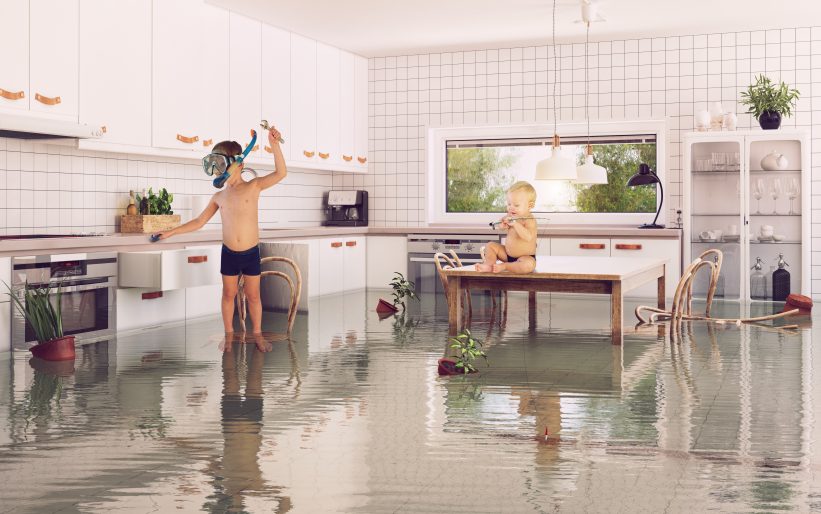Do's & Don'ts of Water Damage.
Do's & Don'ts of Water Damage.
Blog Article
We have unearthed this great article involving 5 Home Safety Tips To Reduce The Risk Of Fire And Water Damage directly below on the web and believe it made perfect sense to relate it with you over here.

Water gives life, water intrusion on components where it's not intended to be can result in damages. It can peel away surfaces as well as erode the foundation if the water saturates right into your structure. Mold and also mold likewise prosper in a damp environment, which can be hazardous for your wellness. Houses with water damage smell old and mildewy.
Water can come from many resources such as tropical cyclones, floods, ruptured pipes, leakages, and sewage system problems. In case you experience water damages, it would be excellent to understand some safety preventative measures. Here are a couple of guidelines on just how to handle water damages.
Do Prioritize Home Insurance Policy Protection
Water damages from flooding because of heavy winds is seasonal. Nonetheless, you can also experience an abrupt flood when a damaged pipe instantly bursts right into your home. It would certainly be best to have residence insurance coverage that covers both disasters such as natural disasters, and also emergency situations like busted plumbing.
Don't Fail To Remember to Switch Off Utilities
In the event of a catastrophe, specifically if you live in a flood-prone area, it would certainly be suggested to turn off the main electric circuit. This removes power to your entire residence, protecting against electrical shocks when water is available in as it is a conductor. In addition, do not forget to shut off the major water line valve. When floodwaters are high, furniture will certainly walk around and also trigger damages. Having the major valve turned off stops more damage.
Do Stay Proactive and Heed Weather Notifies
Storm floods can be very unpredictable. If there is a history of flooding in your neighborhood, stay proactive and ready. Pay attention to discharge cautions if you live near a river, creek, or lake . Secure belongings from the ground floor and cellar, then placed them on the greatest possible degree. Doing so minimizes potential residential or commercial property damages.
Don't Ignore the Roofing System
You can prevent rainfall damage if there are no holes as well as leaks in your roofing. This will certainly prevent water from flowing down your walls as well as saturating your ceiling.
Do Focus On Tiny Leakages
A ruptured pipeline does not happen overnight. Typically, there are red flags that suggest you have actually deteriorated pipelines in your house. For example, you may observe gurgling paint, peeling wallpaper, water touches, water discolorations, or trickling noises behind the walls. Eventually, this pipe will burst. Ideally, you should not wait for things to escalate. Have your plumbing fixed prior to it leads to enormous damages.
Do Not Panic in Case of a Burst Pipeline
When it comes to water damage, timing is vital. Thus, if a pipe ruptureds in your residence, right away closed off your main water valve to reduce off the resource. Call a credible water damages restoration specialist for support.
Water offers life, water intrusion on parts where it's not meant to be can result in damages. Residences with water damages scent stuffy and also old.
Water damage from flooding charges to hefty winds is seasonal. You might notice bubbling paint, peeling off wallpaper, water touches, water stains, or leaking sounds behind the walls. When it comes to water damage, timing is vital.
Some Do's & Don't When Dealing with a Water Damage
DO:
Make sure the water source has been eliminated. Contact a plumber if needed. Turn off circuit breakers supplying electricity to wet areas and unplug any electronics that are on wet carpet or surfaces Remove small furniture items Remove as much excess water as possible by mopping or blotting; Use WHITE towels to blot wet carpeting Wipe water from wooden furniture after removing anything on it Remove and prop up wet upholstery cushions for even drying (check for any bleeding) Pin up curtains or furniture skirts if needed Place aluminum foil, saucers or wood blocks between furniture legs and wet carpet Turn on air conditioning for maximum drying in winter and open windows in the summer Open any drawers and cabinets affected for complete drying but do not force them open Remove any valuable art objects or paintings to a safe, dry place Open any suitcases or luggage that may have been affected to dry, preferably in sunlight Hang any fur or leather goods to dry at room temperature Punch small holes in sagging ceilings to relieve trapped water (don't forget to place pans beneath!); however, if the ceiling is sagging extremely low, stay out of the room and we'll take care of it DO NOT:
Leave wet fabrics in place; dry them as soon as possible Leave books, magazines or any other colored items on wet carpets or floor Use your household vacuum to remove water Use TV's or other electronics/appliances while standing on wet carpets or floors; especially not on wet concrete floors Turn on ceiling fixtures if the ceiling is wet Turn your heat up, unless instructed otherwise

We hope you enjoyed reading our part about Preventing Fires and Water Damage In Your Home. Many thanks for taking time to read our short article. Sharing is caring. Helping people is fun. Thanks for your time. Kindly visit our website back soon.
Report this page